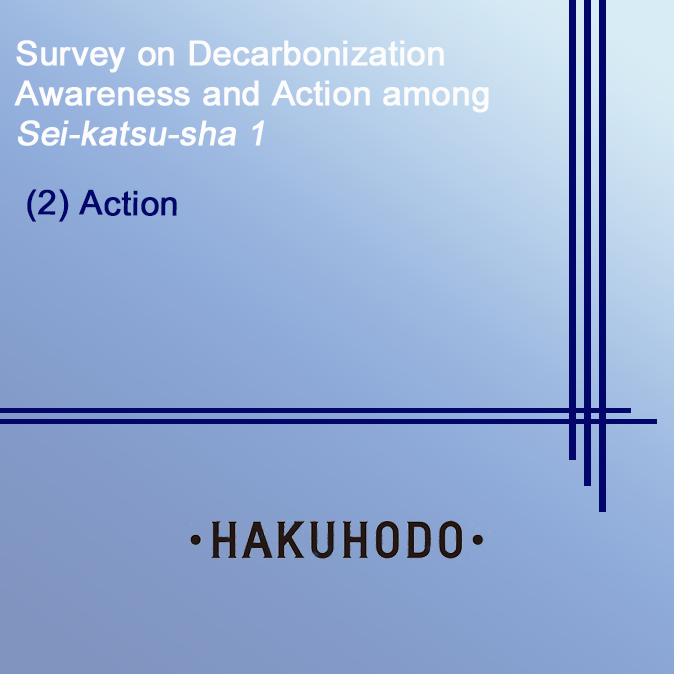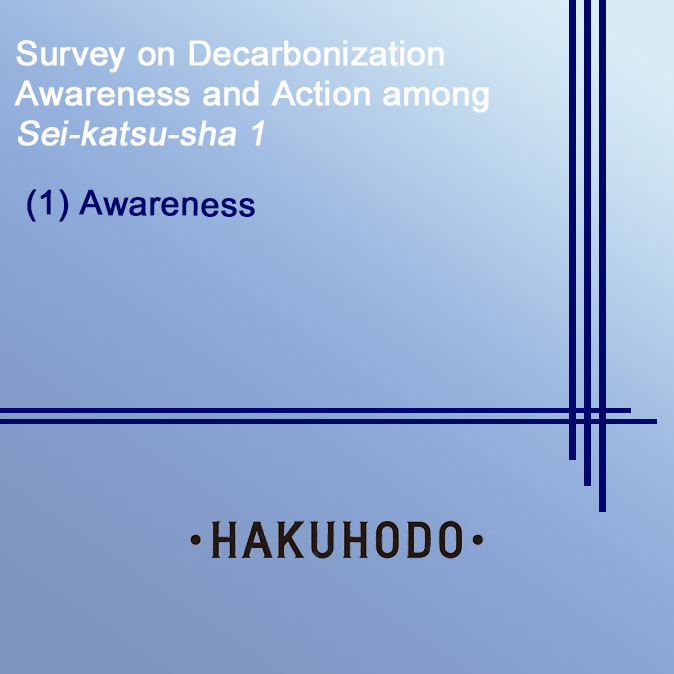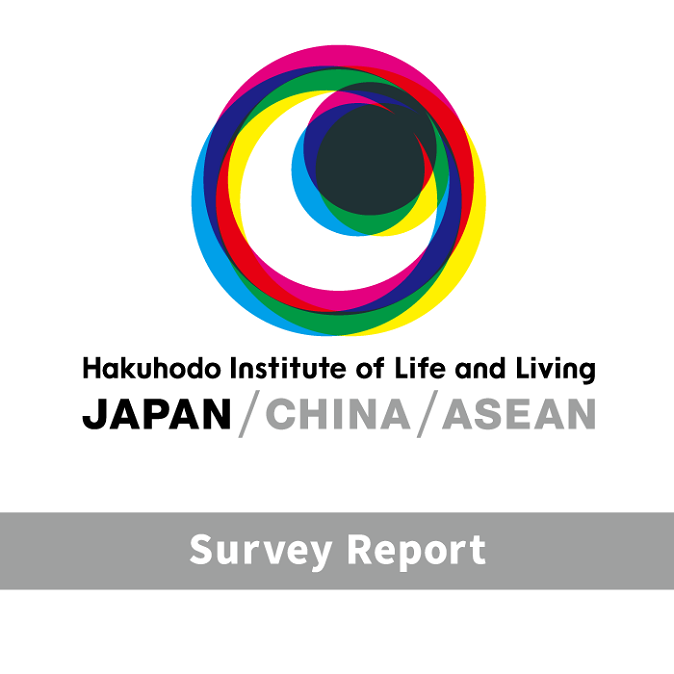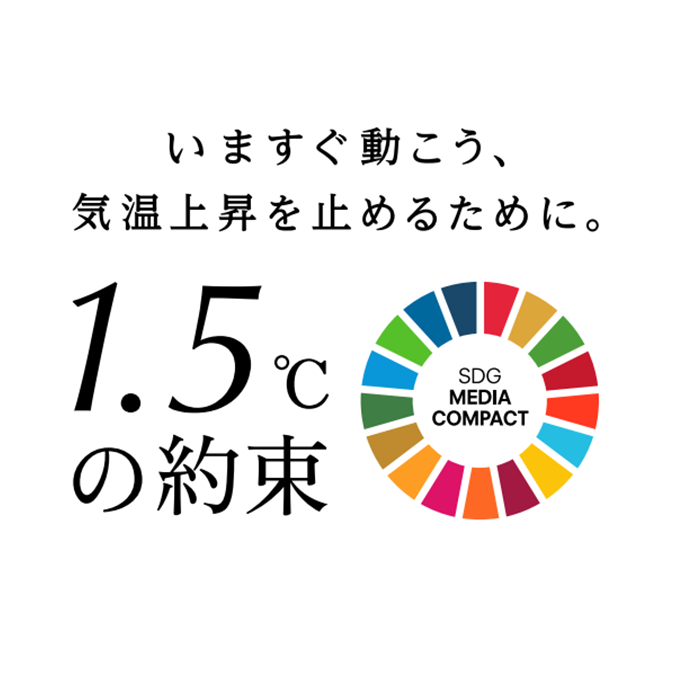- News
- Research
Term awareness of “decarbonization” rises to 90% with no increase in action
Key triggers for use of relevant products include, for younger generations: recommendation by a celebrity and demonstration of an environmentally-consciousness lifestyle; and for older generations: less environmental impact during use or upon disposal and labeling of CO2 reduction
Hakuhodo Inc.’s Hakuhodo SDGs Project conducted the Second Hakuhodo Survey on Decarbonization Awareness and Action among Sei-katsu-sha in March 2022.
Six months after the first survey, we interviewed respondents to identify any changes in decarbonization awareness and action, as well as motives to drive action among sei-katsu-sha. The results indicate increased awareness of key terms such as “decarbonization,” but no change in the number of people taking action. Among younger generations, in particular, around 60% said they don’t really know what to do or don’t have a specific time when they think about or can contribute to efforts. Although over half of respondents said they would take action if financial benefits are available, we found that key triggers for purchasing zero- and low-carbon products and services differed among age groups. The survey was conducted over March 4–5, 2022 covering 1,400 males and females aged 15–79 across Japan.
Key Findings
Increasing decarbonization awareness not leading to purposeful action
・ The term “decarbonization” was recognized by 90.8% of respondents (vs. 85.4% in the previous survey), while 85.6% (vs. 77.7%) were aware of the term “carbon neutrality.” Although these increases of over 5 points indicate that the concepts are gaining ground among the population, there is no significant increase in the share of those driven to take action, which remains at 33.1% (vs. 32.1%).
・ People apparently recognize decarbonization as a national issue, with more than 70% of respondents regarding it as a challenge to be met by the whole population and an urgent matter warranting greater national effort. However, around 60% of younger respondents said they don’t really know what to do or don’t have a specific time when they think about or can contribute to efforts.
Action would be triggered by financial benefits, and, among younger generations, by topicality and whether it can be shared
・ Asked about effective incentives for decarbonization action, as many as 52.4% of respondents cited financial benefits (value for money, cost savings, etc.).
・ Saving money was also the most attractive feature of zero- and low-carbon products. In addition, younger generations tended to be motivated by recommendation by an influencer or celebrity and being able to demonstrate that they are leading an environmentally-conscious lifestyle via social media campaigns, etc., whereas less impact on the global environment during use or upon disposal and labeling of additional CO2 reduction vs. average products were popular motives among older generations.
Intention to buy/use zero- and low-carbon products/services more focused on durables and life infrastructure than on general consumer goods
・ Asked about their intention of buying or using zero- and low-carbon products and services by category, more respondents would rather buy products that can contribute to reducing CO2 emissions, even if they are a little more expensive or require them to change a contract in those categories that, once purchased, could contribute to CO2 reduction in the mid- to long-term, such as home electronics, housing, cars and electricity. The shares of such respondents tended to exceed those of respondents citing general consumer goods by 10–15 points.
Our Observations
Despite increased public awareness of the term “decarbonization,” we found that many sei-katsu-sha are still not taking purposeful action in their daily lives, even with interest in the environment heightened by news reports and TV programs on natural disasters. Most people cited financial incentives, including value for money and cost savings, as an effective trigger for decarbonization action. There are high expectations for more cost-effective products and services, whose availability is still limited. Given that many young people still know little about decarbonization, it might be effective to appeal to their preference for peer-to-peer sharing to encourage action.
Furthermore, people’s intention to use products and services that can contribute to reducing CO2 emissions tended to be high in categories that can be used longer, such as durables and life infrastructure. Efforts should be focused on developing attractive products/services and effective measures to facilitate use of those categories of products and services, in order to promote action among sei-katsu-sha.
(Observations provided by the analyst)
Survey outline
Method: Internet survey
Respondents: 1,400 males and females aged 15–79 across Japan
*The results were weighted back for analysis purposes to reflect the demographic composition by gender and age. Data cited in this document are weighted-back figures
Survey area: Nationwide
Survey period: March 4–5, 2022
Conducted by: H.M. Marketing Research, Inc.
Implementing body
This survey was conducted by the Hakuhodo SDGs Project, a company-wide initiative to support companies’ SDGs efforts.
















